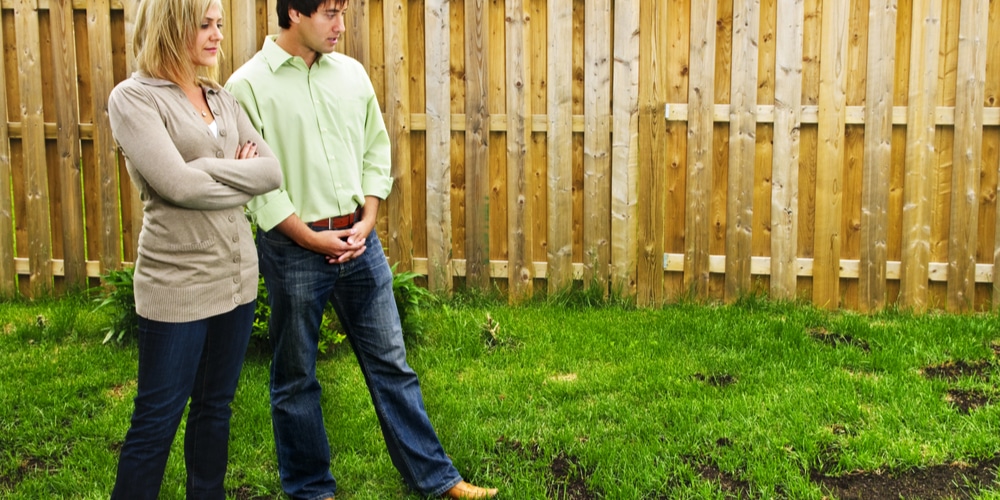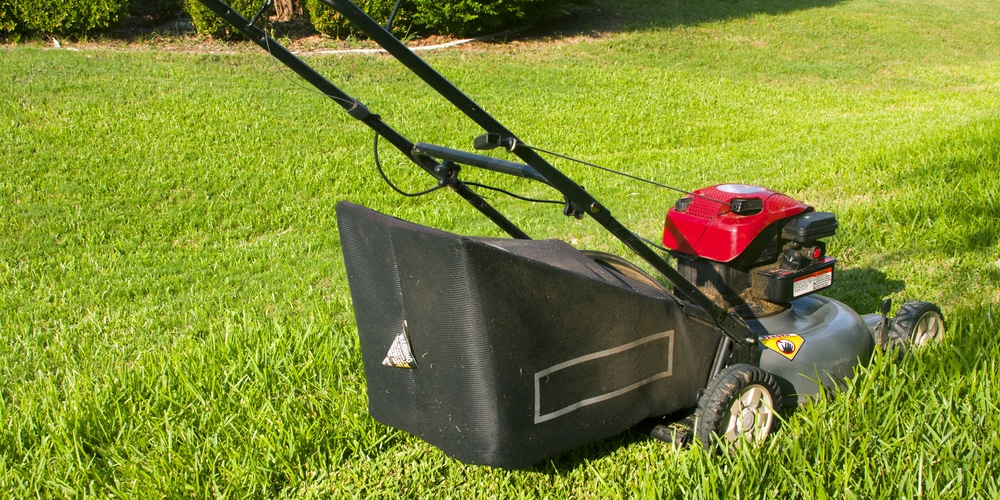Some landscape gardeners worry that mowing after fertilizing will scoop up precious nutrients. But different fertilizer types exist. So, they might switch to liquid products yet still wonder whether it is ok to cut the grass right after feeding the lawn.
Can I mow after fertilizing? Yes, you can. When you use granular fertilizer, the pearls go right into the ground. So, the mower will not pick them up. Only wait three days if the soil temperature is about 55F and you just sprayed a pre-emergent with a non-ionic surfactant.
Aerobic biodegradation of non-ionic surfactants, which may make your granular fertilizer stick on top, needs at least 50 hours to reach 90%.
What Happens After You Fertilize Warm- And Cool-Season Grasses
If you choose a fertilizer with low nitrogen and high phosphorus and potassium, you can encourage your grass to wake up. In this way, you do not punch it in the face and force it to wake up and start growing. Which often does not work and can backfire.
But what happens when you fertilize the lawn? In general, fertilizers add nutrients that your grass needs into the soil. But most commercial products are quick-release fertilizers. So, if you put them out too early, you will waste a lot of fertilizer because your grass is not at a stage where it can use yet.
Some greenkeepers may apply their fertilizer before mowing the lawn and see no results because the grass has not come out of dormancy yet. In that case, the problem lies not in the lawncare practice of mowing after fertilizing but in the lawncare schedule.
How Can I Mow After Fertilizing Successfully?
The first step is to wait until you notice your lawn greening up naturally. Here are three steps to point out how you can speed up the process and act on time:
- Mow your lawn low as early as March to get rid of that dead layer of dormant grass and allow the sunshine to warm the soil.
- Do a soil test to find if you need to amend the soil.
- Wait for the temperatures to get into the 80s.
Cool- and warm-season grasses have different growth potential. And as you get more consistently warm temperatures and more sunlight, you will have more top growth before the spring flush.
Broadly speaking, the best time to fertilize cool-season grasses is between mid-March and early May. Instead, warm-season grasses do not come out of dormancy until mid to late May and reach their full growth potential in July.
Different grass varieties also have specific needs. So, be sure to target each lawn accordingly before mowing it.
1. Pre-Spring Mowing
Bag mowing your dormant lawn in late winter is essential to suck up any dead debris from the winter. Such debris can include acorns, pine straws, sticks, and twigs. And you have to remove them because they will keep soil temperatures down and attract plant pests and diseases. Of course, if you live in a warmer zone like in California, you might not have such a problem. But!
Cutting your dormant turf early and regularly will also keep weeds low. Usually, mowing every seven days is enough to discourage most weeds from producing seeds. Plus, it will keep weed control to a minimum if you have a sensitive grass type like centipede grass, which growth suffers when using most weed killers.
Applying carbon or humic acid to the soil after pre-spring mowing is another good idea to promote beneficial microbial activity. It will improve water efficiency and help the lawn act as a sponge every time it rains. Plus, it will reduce water pooling and beak up the soil, giving it more absorption.
2. Checking Soil PH
Soil pH can lock or even unlock different nutrients for your turf. And your grass needs most of them to grow lush and green. So, making soil tests from time to time is necessary for the best results.
Every grass has its pH preference. For instance, tall fescue grows better on slightly acidic soils (between 5.5 and 7.5). And Bermuda grass prefers a more neutral range (6.2-7.3). You should check with your supplier for the best soil pH and use a pH meter for precise testing.
3. Proper Timing
In most northern areas, mid-March is the best time to start focusing on pre-emergence before fertilizing your lawn. And as your grass growth potential starts to rise beyond 50%, fertilizing will yield better results.
In the North, the proper timing for fertilization usually is between April and May. But in the end, it will depend on temperatures. And if you put down a pre-emergent early and wait for about three weeks before fertilizing and mowing, the lawn will be fully awake and grow healthier than ever!
Related Article: When to Fertilize Your Lawn in Texas?

